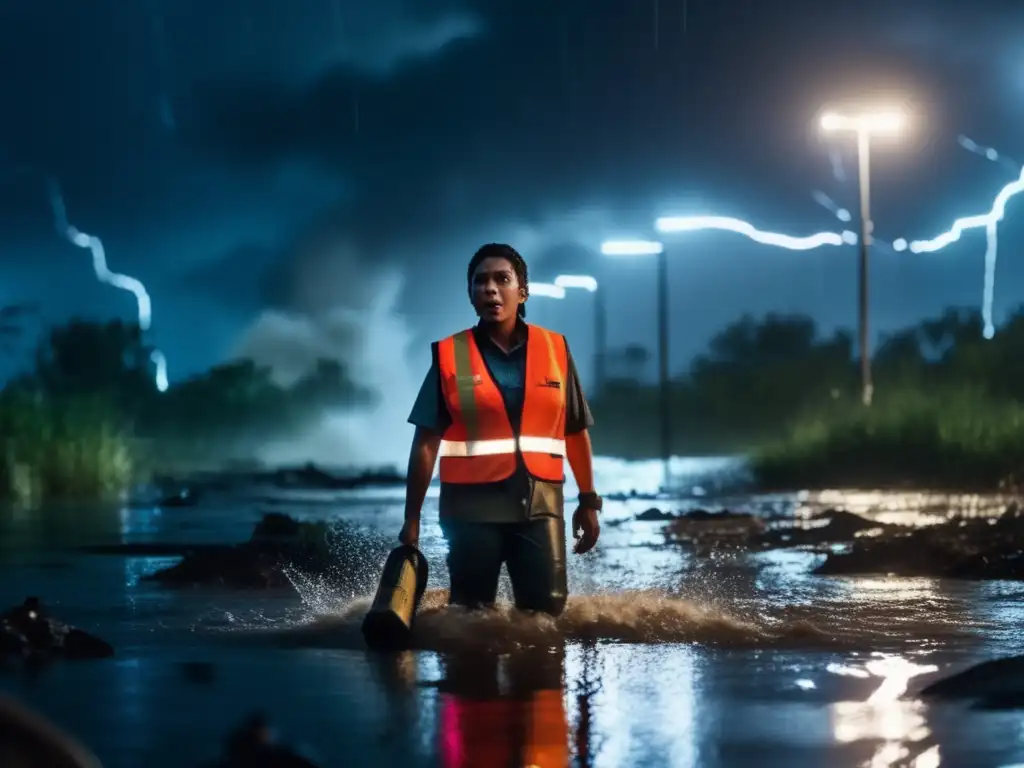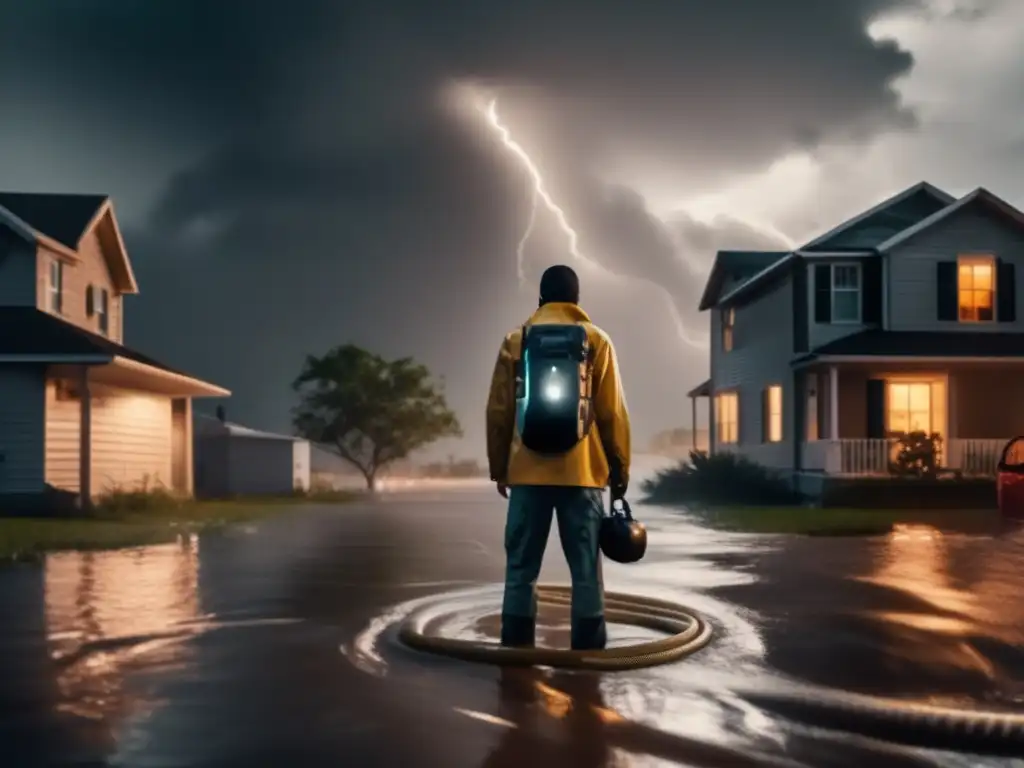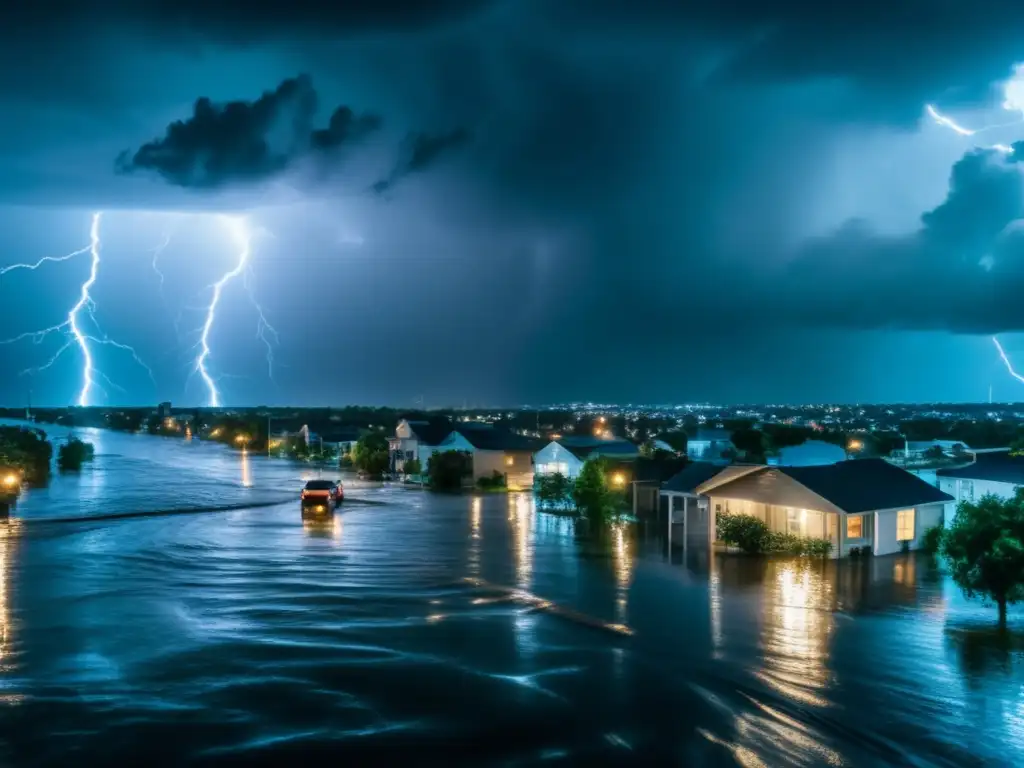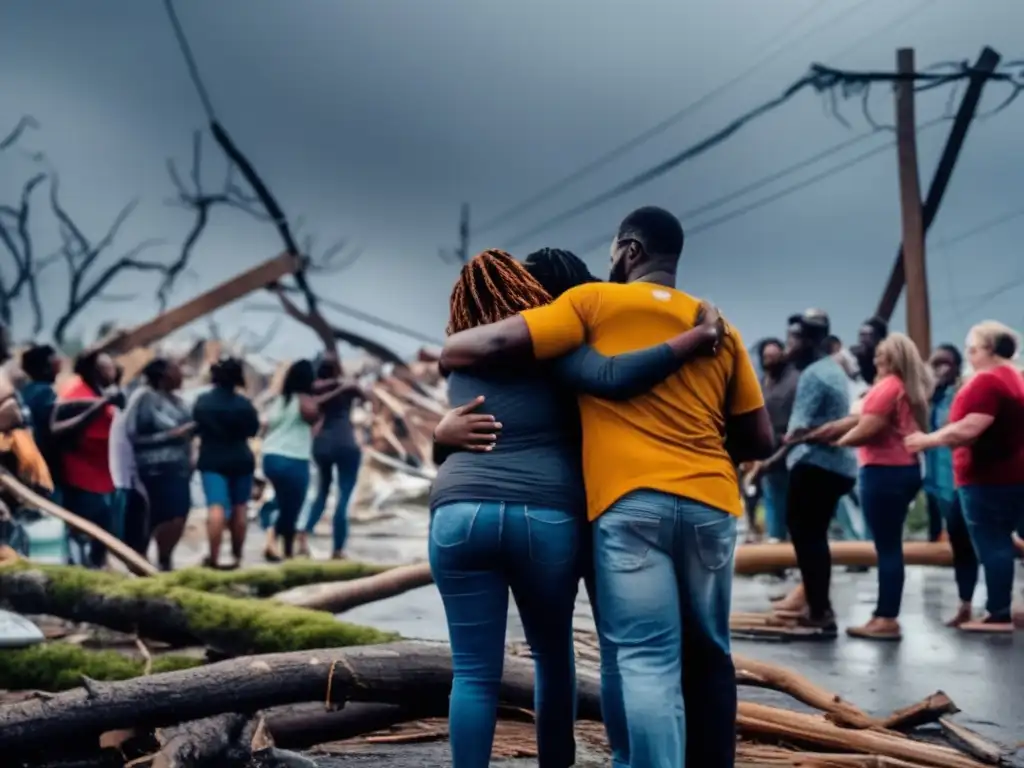Flood Safety: Navigating Floodwaters During A Hurricane

Flood Safety: Navigating Floodwaters During a Hurricane
Introduction
During a hurricane, flooding is one of the most common and dangerous threats to both life and property. Floodwaters can rise quickly and become extremely powerful, sweeping people and vehicles away and causing catastrophic damage in their wake. It's crucial to know how to navigate floodwaters and take necessary precautions to stay safe during a hurricane. In this article, we'll explore some basic information about hurricanes, why they cause flooding, and what you can do to safely navigate floodwaters during a hurricane.
How Hurricanes Cause Flooding

The Relationship Between Hurricanes and Water
Hurricanes are giant, swirling storms that form over warm ocean waters. These storms are fueled by the heat and moisture that rises from the ocean surface, which in turn creates strong winds and heavy rainfall. When hurricanes make landfall, they bring this same energy with them, but now they're interacting with different elements. Wind and rain are two components that can significantly contribute to flooding.
Storm Surge
A storm surge is a type of flooding that occurs when a hurricane's strong winds push seawater onto land. This phenomenon can be particularly severe in areas that are low-lying, where the water has nowhere to drain. A storm surge can present an immediate danger, as it often affects coastal areas and can happen quickly, leaving little time for evacuation. If you are instructed to evacuate your area due to the possibility of a storm surge, please follow the instructions of local authorities and leave the area as soon as possible.
Torrential Rainfall
One of the most significant threats posed by a hurricane is the amount of rainfall that it can produce. A slow-moving hurricane can drop large amounts of rain over a wide area, leading to severe flooding. When the soil can't absorb any more water, the excess runs off into streams and rivers, causing them to overflow their banks and flood surrounding areas. This phenomenon is known as "flash flooding," and it can be particularly dangerous because it can happen with little warning.

Evacuate If Possible
If authorities have issued an evacuation order due to flooding, follow it immediately. Do not wait until the last minute to leave. There may be limited time to evacuate safely, and waiting too long could put you in danger. Follow designated evacuation routes and seek higher ground.
Avoid Walking or Driving Through Floodwaters
Floodwaters can be deceptively deep and powerful. It only takes six inches of water to knock over an adult, and just two feet of water can sweep away a vehicle. Avoid walking or driving through floodwaters whenever possible, as even a small amount of water can pose a significant threat. Never attempt to drive through moving water - turn around and find an alternate route.
Watch for Hazards
Floodwaters can be full of unseen hazards, such as debris, downed power lines, and even wildlife. Keep an eye out for these dangers, and avoid wading into flooded areas if possible. If you must enter the water, wear protective clothing and footwear, and use a sturdy stick to help you navigate the terrain.
Frequently Asked Questions

-
Can I safely walk or drive through floodwaters during a hurricane?
No, it's never safe to walk or drive through floodwaters during a hurricane. Even shallow water can be powerful enough to knock you over or sweep away your vehicle.
-
What is a storm surge, and how does it contribute to flooding?
A storm surge is a type of flooding that occurs when a hurricane's strong winds push seawater onto land. This phenomenon can be particularly severe in low-lying areas, where the water has nowhere to drain.
-
What should I do if I receive an evacuation order due to flooding?
If authorities have issued an evacuation order due to flooding, follow it immediately. Do not wait until the last minute to leave. Follow designated evacuation routes and seek higher ground.
-
What are some hazards to watch out for when navigating floodwaters during a hurricane?
Floodwaters can contain debris, downed power lines, and even wildlife. It's essential to keep an eye out for these dangers and avoid wading into flooded areas if possible.
-
How can I determine if my area is at risk for flooding during a hurricane?
You can check with local authorities or visit websites such as the National Hurricane Center or FEMA to see if your area is at risk for flooding during a hurricane.
Conclusion
In conclusion, flooding is a serious threat during hurricanes, and it's essential to take every precaution necessary to stay safe. Avoid walking or driving through floodwaters, watch for hazards, and evacuate when instructed to do so. By staying informed and taking appropriate measures, you can help protect yourself and your loved ones during a hurricane. Remember, it only takes a few inches of water to cause significant damage.
If you live in a hurricane-prone area, it's essential to create an emergency plan and familiarize yourself with evacuation routes ahead of time. Keep an eye on weather conditions and stay alert to any warnings or alerts issued by local authorities. Together, we can help mitigate the impact of hurricanes and keep our communities safe.
Additional Resources

 Safety Measures For Pets During A Hurricane
Safety Measures For Pets During A Hurricane Helping Your Neighbors: Community Solidarity During A Hurricane
Helping Your Neighbors: Community Solidarity During A Hurricane Coping Mechanisms: Managing Stress During A Hurricane
Coping Mechanisms: Managing Stress During A HurricaneIf you want to discover more articles similar to Flood Safety: Navigating Floodwaters During A Hurricane, you can visit the During the hurricane: category.
Leave a Reply

Articulos relacionados: